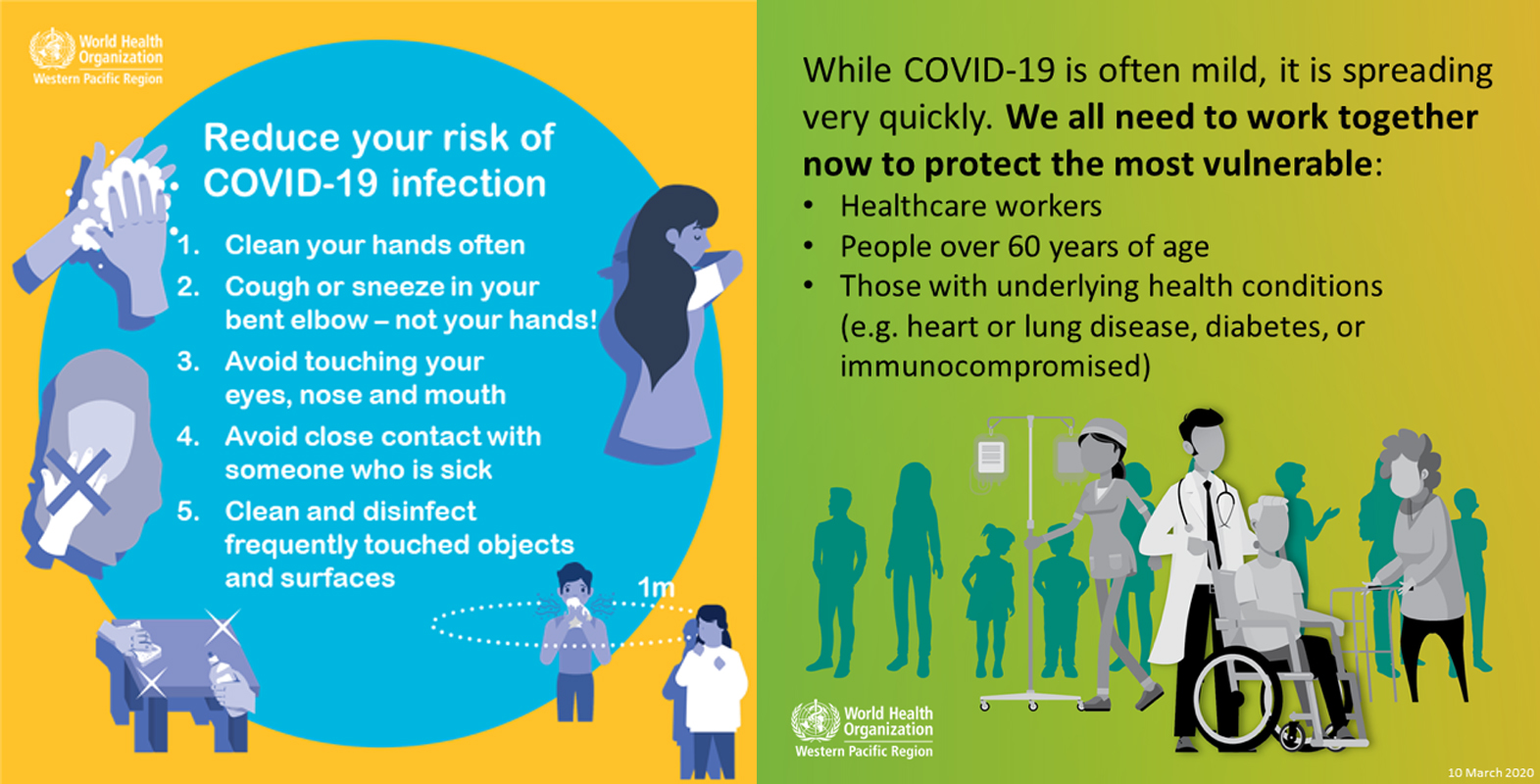
If you have been living under a rock for the past few months and haven't heard about COVID-19, stay there and continue your self-imposed social distancing. But if you have heard about COVID-19 and still have questions as to what it is, read on for a brief summary as to how it started, how you can protect your family, and how it currently (and will further) impact your everyday life.
What is COVID-19?
The Coronavirus Disease 19 (COVID-19) is a respiratory disease caused by the novel coronavirus that first emerged in China's city of Wuhan in December 2019. Coronaviruses – a family of viruses – are named for the crown-like spikes on their surface. The World Health Organization reports over 191,000 confirmed COVID-19 cases worldwide, including 7,807 deaths (as of March 18, 2020).
How can I get COVID-19? Am I and my family at risk of getting it?
COVID-19 is transmitted person-to-person through respiratory droplets produced when an infected person coughs or sneezes. These droplets can land in the mouths or noses of people who are nearby. You must practice social distancing, which means maintaining a distance of at least 6 feet from other people. Older adults and people with compromised immune systems or with pre-existing medical conditions such as lung or heart disease or diabetes are more prone to fall severely ill with the virus.

How can I help keep myself and others healthy?
Regularly wash your hands with soap and water for at least 20 seconds, especially after you have been in a public place, or after blowing your nose, coughing or sneezing. If soap and water are not readily available, use a hand sanitizer that contains at least 60% alcohol. Cover all surfaces of your hands and rub them together until they feel dry. Avoid touching your eyes, nose, and mouth with unwashed hands. You should also stay at home when you are sick, or when you believe you have been exposed.
And with some of us currently working from home on shared computers, remember to clean your keyboards daily. Wipe the keys and the surrounding area with a disinfectant wipe or a microfiber cloth coated with diluted rubbing alcohol. Keep them wet (not soaking) for about three minutes, and just let it dry on its own. Always make sure everything is 100% dry before powering back on.
What are the symptoms?
According to the World Health Organization, the most common symptoms of COVID-19 are fever, tiredness and dry cough. Some patients experience aches and pains, nasal congestion, runny nose, sore throat or diarrhea. Patients usually have mild symptoms that start gradually. Most patients recover without needing any special treatment. About 1 in 6 patients become seriously ill and develop breathing difficulties.
Symptoms may appear 2 to 14 days after exposure. If you have recently been to China or in close contact with someone with confirmed COVID-19 in the past 2 weeks and develop symptoms, call your doctor. However, there are reports that asymptomatic people – those who are not showing any symptoms – can also pass on the virus.
When should I go to the ER?
Seek medical attention immediately if you develop emergency warning signs for COVID-19. Emergency warning signs include difficulty breathing or shortness of breath, persistent pain or pressure in the chest, new confusion or inability to arouse, and bluish lips or face.
What should I do if I test positive for COVID-19 or is suspected to have the virus but have not been tested?
Stay home except to get medical care. You should not visit public areas and avoid using public transportation, ride-sharing or taxis. You need to separate yourself from other people in the home. As much as possible, you should stay in a specific "sick room" and away from other people inside your home, and avoid sharing personal household items. Even when indoors, wear a facemask. Cover your coughs and sneezes, and clean your hands often. All "high-touch" surfaces such as doorknobs, kitchen counters and yes, the remote control, must be cleaned every day.
What can we do to prepare, if you haven't yet?
The CDC recommends creating a plan of action in case of illness in the household or disruption of daily activities. Consider a two-week supply of prescription and over the counter medications, food and other essentials. Be prepared and know how to get food and water delivered to your home in case you get quarantined. The CDC's how-to-prepare list is available online.
Several Bay Area counties announced "shelter-in-place" orders. What does that mean? Can I get a haircut or my nails done?
The "shelter-in-place" order directs everyone to stay inside their homes at all times except for essential events, which include grocery shopping or going to the doctor. Getting a haircut or a manicure are both considered non-essentials.
Activities like walking your dog or going on a hike are allowed, but with social distancing implemented. Aside from buying groceries, you are also allowed to go out to do things like mail bills, go to the bank or get gas. Only go out if necessary, and always keep at least 6 feet between you and others to avoid contact.
Help! We have watched Frozen and Daniel Tiger's Neighborhood too many times. What else can we do?
Check out and consider the following education companies offering free subscriptions due to school closings: BrainPOP, Circletime, ClassDojo, Kahn Academy, Outschool and PBS LearningMedia. A more comprehensive list is available at Kids Activities.
What recreational activities can I do for the next few weeks?
- Go on walks/runs in nearby parks but remember to practice effective social distancing
- Watch any (or all) of the 30,000 free movies at Kanopy – Just use your local library card and password if your branch offers Kanopy
- Borrow eBooks from Contra Costa Library, Alameda County Library or enki Library (will also need your library card number)
- Pull weeds or prepare your garden for Spring
- Follow (and not just watch) free online yoga or Zumba classes
- Virtually tour popular museums at Google Arts & Culture like the Guggenheim Museum in New York, Pergamon Museum in Berlin, and Uffiz Gallery in Florence
- Write letters or cards to people/family members you haven't reached out to recently
- Bring out the dusty board games and play with your family or housemates
References:
Centers for Disease Control and Prevention (CDC)
JAMA Network
John Mopkins Medicine
Playbill
Prevention.com
World Health Organization (WHO)
Marge Maceda, a mom of two intrepid boys, enjoys learning all things SalesForce. She is not hoarding; she just likes Cheetos.